Camilla is a genus of flies, from the family Camillidae. Species are small slender, dark flies generally 2–3.5 millimetres (0.1–0.1 in) in length.
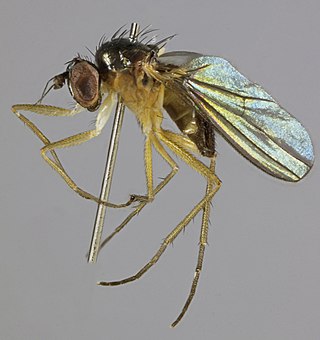
Anepsiomyia is a genus of flies in the family Dolichopodidae. It contains only one extant species from Europe, Anepsiomyia flaviventris, as well as two fossil species from the Eocene of Russia and Belarus. The systematic position of the genus is currently uncertain: it has been variously placed in subfamilies such as Sympycninae and Peloropeodinae.
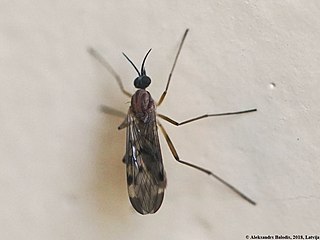
Sylvicola fenestralis, the window gnat, is a medium gnat (6–10 mm) of the family Anisopodidae. It is found in the Palearctic.

Canace nascia is a European species of Canacidae.
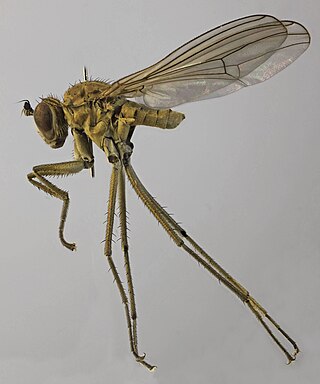
Hydrophorus oceanus is a species of fly in the family of Dolichopodidae. It is found in the Palearctic. For identification see

Scellus notatus is a species of fly in the family of Dolichopodidae. It is found in the Palearctic.

Campsicnemus curvipes is a species of fly in the family Dolichopodidae. It is distributed in Europe and North Africa.
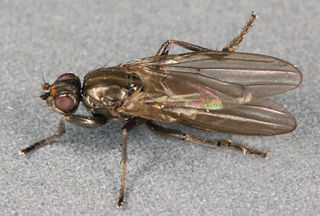
Copromyza nigrina is a species of fly in the family Sphaeroceridae. It is found in the Palearctic.
Cephalops aeneus is a species of fly in the family Pipunculidae. It is found in the Palearctic.

Tetanocera elata is a species of fly in the family Sciomyzidae. It is found in the Palearctic Larvae of T. elata are known obligate feeders on slugs both as parasitoids and predators.
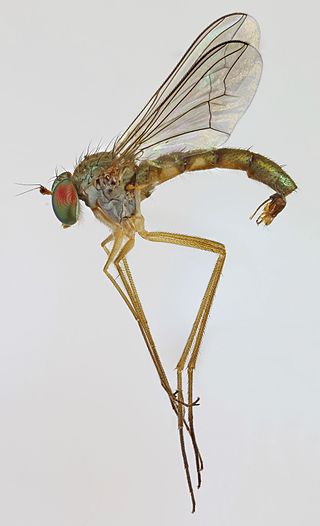
Sciapus wiedemanni is a species of fly in the family Dolichopodidae. It is widely distributed across Europe. It has also been introduced to Washington, United States and Ontario, Canada.
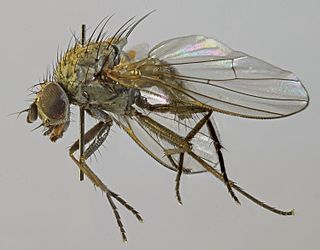
Azelia cilipes is a species of fly in the family Muscidae. It is found in the Palearctic.

Bibio varipes is a species of fly in the family Bibionidae. It is found in the Palearctic.

Bibio longipes is a species of fly in the family Bibionidae. It is found in the Palearctic and the Nearctic.
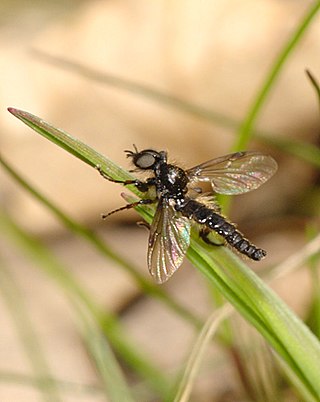
Bibio lanigerus is a species of fly in the family Bibionidae. It is found in the Palearctic.
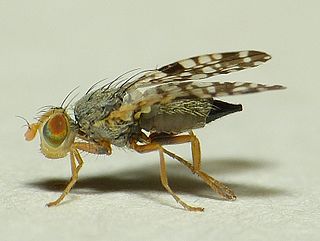
Campiglossa absinthii is a species of fly in the family Tephritidae, the gall flies. The species is found in the Palearctic. Long. : 3-4 mm. The body is ashy grey; the humeral callus and part of pleura yellowish. The mesonotum has three or five more or less distinct brown bands. The legs are sometimes entirely rufous. The wings are opaline with brown spots. The larvae feed on Asteraceae, including Artemisia maritima and Artemisia vulgaris.
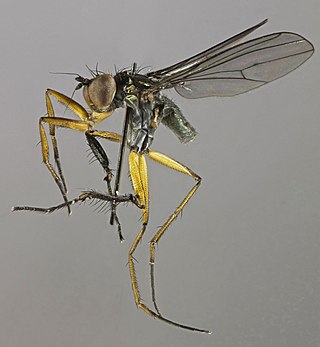
Campsicnemus scambus is a species of fly in the family Dolichopodidae. It is distributed in Europe, except for the south.

Limnellia quadrata is a species of fly in the family Ephydridae. It is found in the Palearctic . It is 2 or 3 mm long and has distinctively patterned wings. It is found in meadows.

Sciapus platypterus is a species of fly in the family Dolichopodidae. It is found in the Palearctic.
















